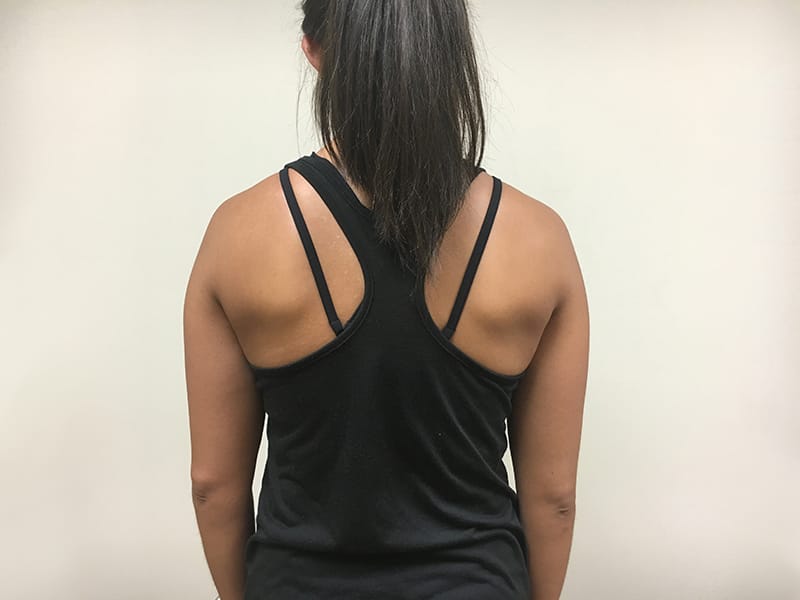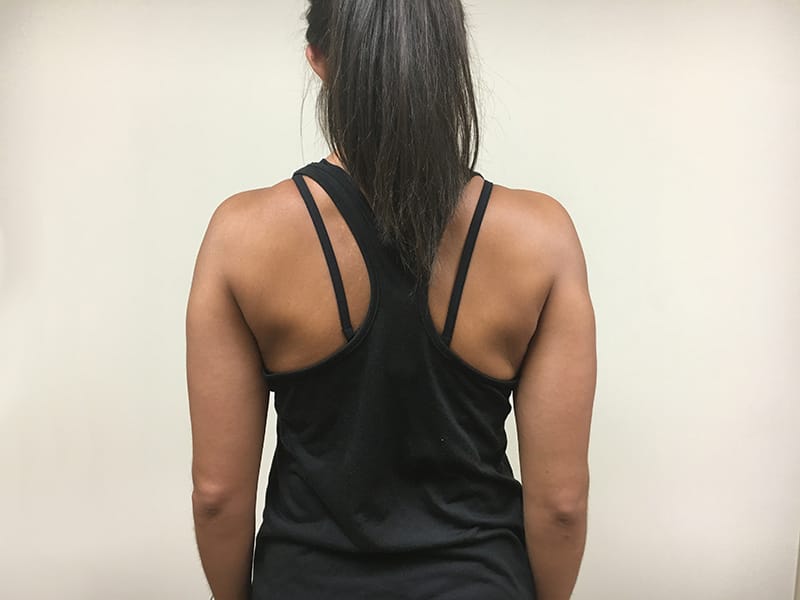The shoulder is where various muscles, ligaments and joints combine to allow movement of the upper extremity. Due to these various structures, there are a number of things that can cause injury, including overuse, inflammation, muscle imbalances, postural issues, falls or functional stressors. Those issues can lead to tendonitis, rotator cuff strains and tears, impingement and dislocation.
With all the moving parts, it’s important to find out where your shoulder pain or injury originates. And then, get it back into working shape through exercise and physical therapy.
When everything rests on your shoulders, they’re more prone to injury.
The same thing that makes your shoulder such a mobile joint can frequently lead to instability. Shoulder injuries happen when there’s a lack of sufficient stabilization. One of the most common problems is a lack of rotator cuff strength.
The rotator cuff is a collection of tendons from four separate muscles that help increase stability in the shoulder joint. Rotator cuff injuries occur often due to repetitive motion in manual labor occupations or in athletes who throw frequently. You can also suffer a rotator cuff injury from a single incident, such as a fall, or from progressive degeneration over time. There also is an increased risk for shoulder pain/injury in people over the age of 40 and those with diabetes.
Your shoulders can be a pain in the neck!
Another complication with finding the source of your shoulder injury is that pain can actually originate in the neck. An injury or functional imbalance of the neck can refer to the shoulder and mimic pain. You may assume it’s coming from your shoulder.
Radiating neck pain can also bring on symptoms of arm and shoulder pain, as well as numbness or tingling in the arms and hands. There are various tests and measures to help differentiate the source of shoulder pain, which can be further assessed by a physical therapist.
Get physical therapy and get moving to fix your shoulder pain!
A physical therapist can examine your shoulder to get to the source of your injury and identify the right treatment. Typical physical therapy treatment of the shoulder can include:
- Strengthening exercises
- Range of motion exercises
- Functional activities such as lifting and carrying
- Stretching
- Soft tissue manipulation
- Manual therapy
Exercises for Shoulder Pain
Exercises are an important part of your recovery from a shoulder injury, helping you to increase the strength and stability of your shoulder joint. Many of the exercises a physical therapist will prescribe include no equipment, like isometric contractions or postural exercises for improved stabilization in your shoulder blades. Others, like resistance band exercises for strengthening with increased resistance, use minimal equipment provided by your PT.
If you’re experiencing shoulder pain or concerned about your strength or mobility, try out these exercises at home.
Shoulder Isometrics
- Perform these 3 exercises, pushing into a wall with 75–80% percent maximum effort:
- Shoulder abduction: Standing with your arms at your side, push the arm on the side of your injured shoulder out and into the wall.
- Shoulder external rotation: Stand facing a door frame with your injured shoulder at 90 degrees. With your thumb up, push the top of your hand into the door frame and hold it for 10 seconds.
- Shoulder internal rotation: Standing in the same position as the previous exercise, turn your palm to the door frame and push into it with your hand. Hold it for 10 seconds.
- Repeat each exercise 5–10 times.
- Do 2 sets, relaxing in between. Perform the exercises 3–4 times a week.
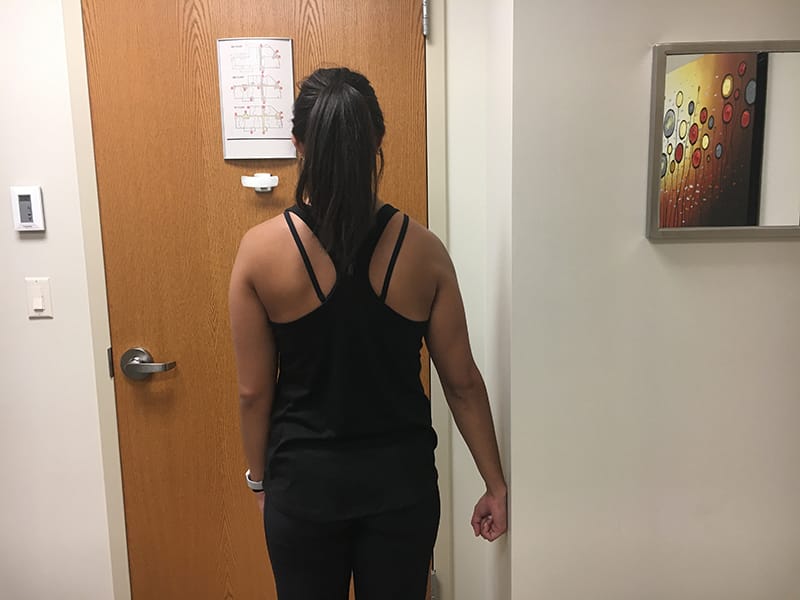
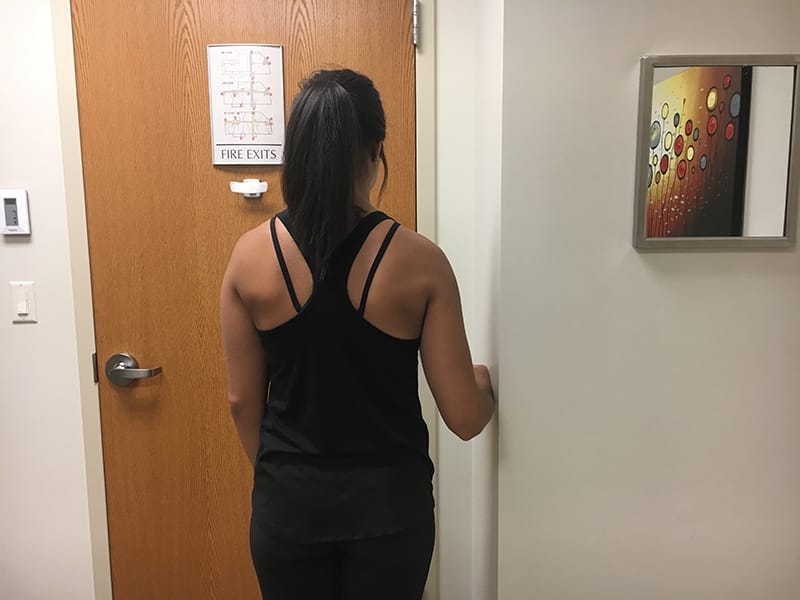
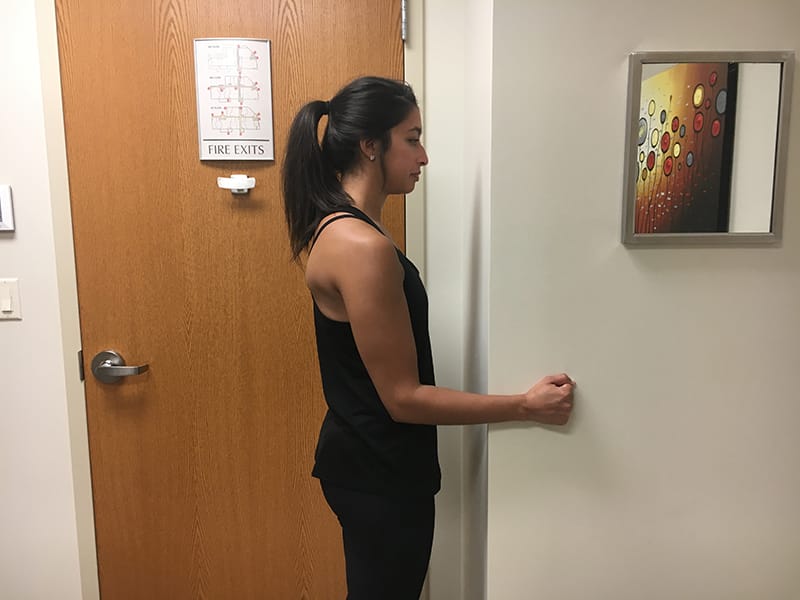
Resistance Band Strengthening
- Use a resistance band to perform these 5 exercises:
- Shoulder extension: With the resistance band attached to a wall or in a door frame, pull back toward your pockets with your arms at your sides and keeping your elbow straight.
- Shoulder flexion: With the band behind you, and still attached to something, pull it upward and outward.
- Shoulder external rotation and internal rotation: keep elbow at your side and the forearm parallel to the floor.
- Shoulder external rotation: Stand with the secured end of the band on the opposite side of your injured shoulder. With your elbow at your side and your forearm parallel to the floor, bend your elbow at 90 degrees and pull the band outward away from your body.
- Shoulder internal rotation: Stand with the secured end of the band on the same side as your injured shoulder. With your elbow at your side and your forearm parallel to the floor, bend your elbow at 90 degrees and pull the band inward toward your body.
- Scapular row: Keeping your hands at waist height, pull back and squeeze your shoulder blades while pulling the band back at your side.
- Repeat each exercise 10–15 times.
- Do 2–3 sets 3 or 4 times a week.
Shoulder Extension
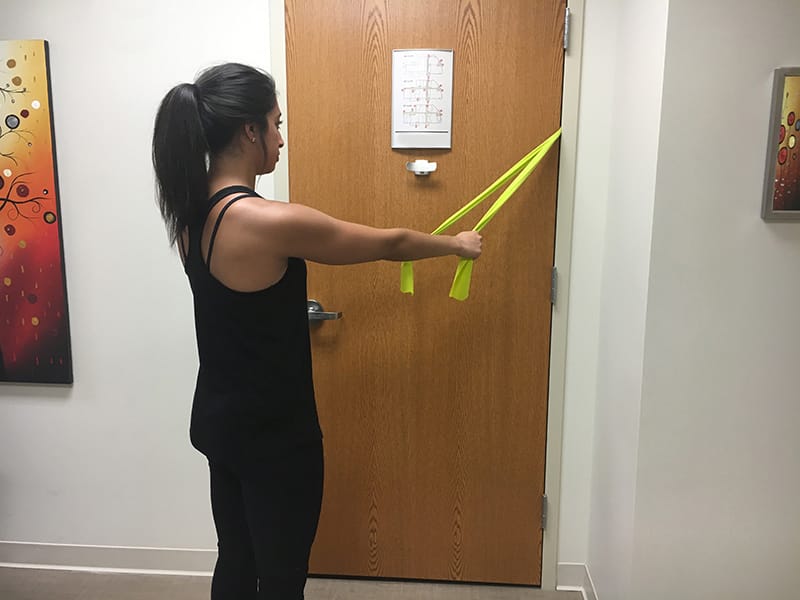
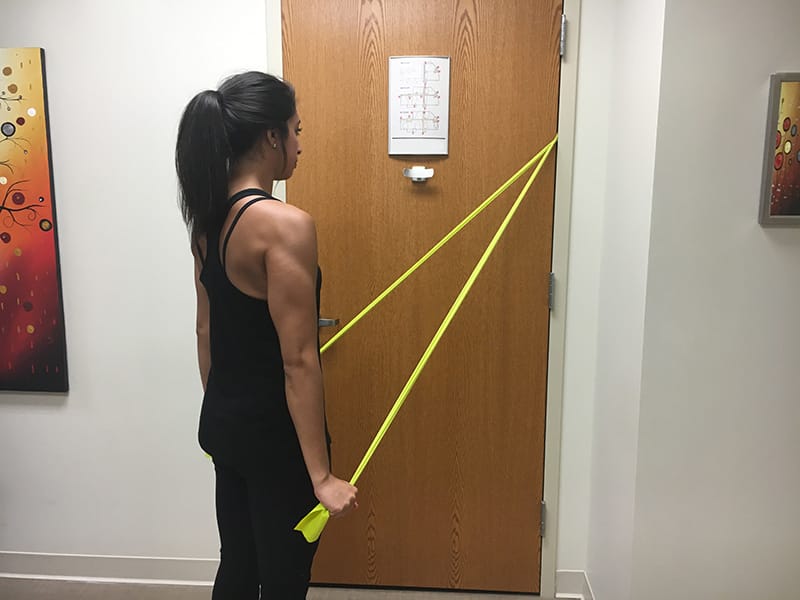
Shoulder Flexion
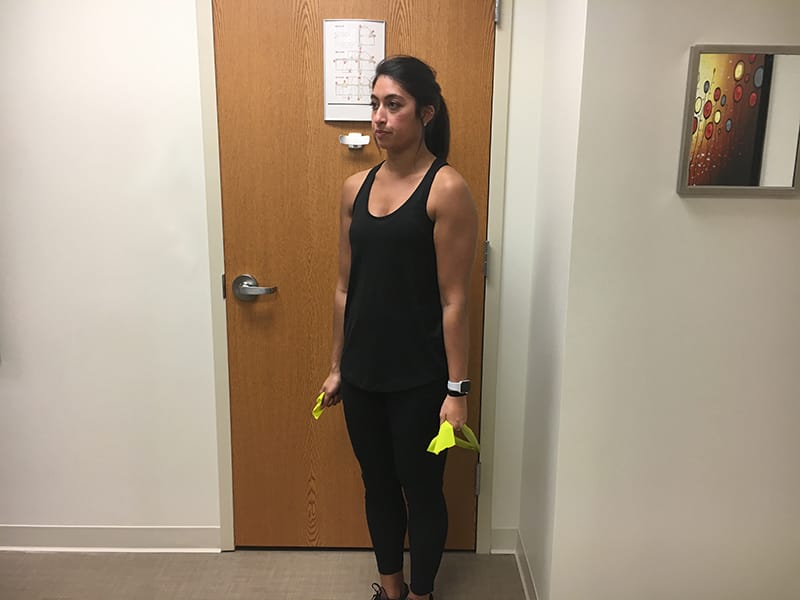
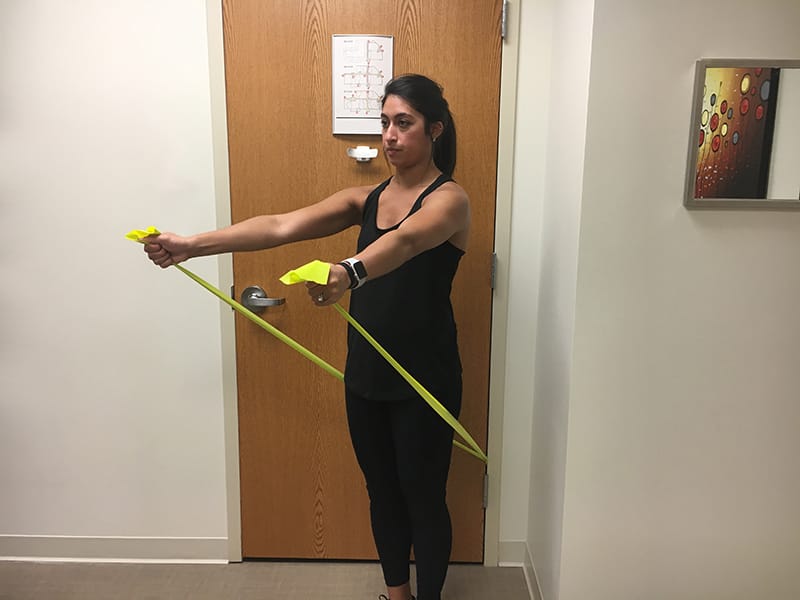
Shoulder External Rotation
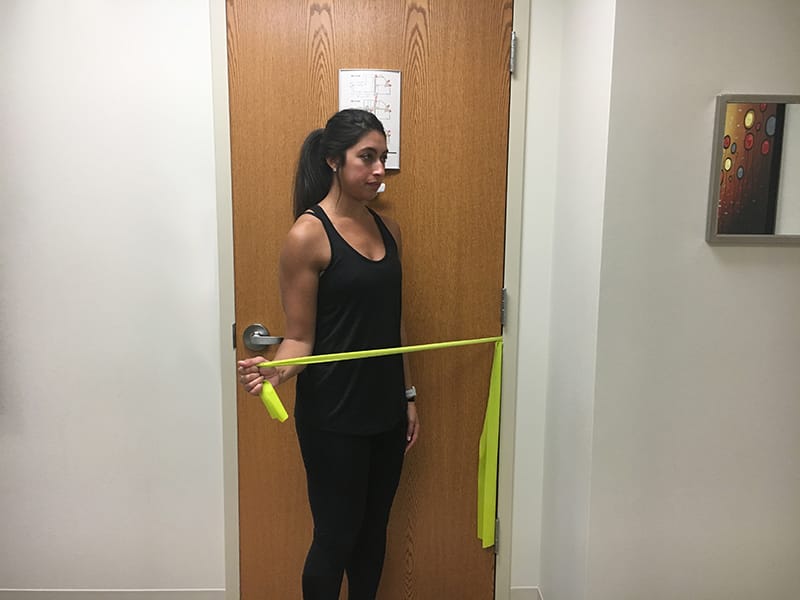
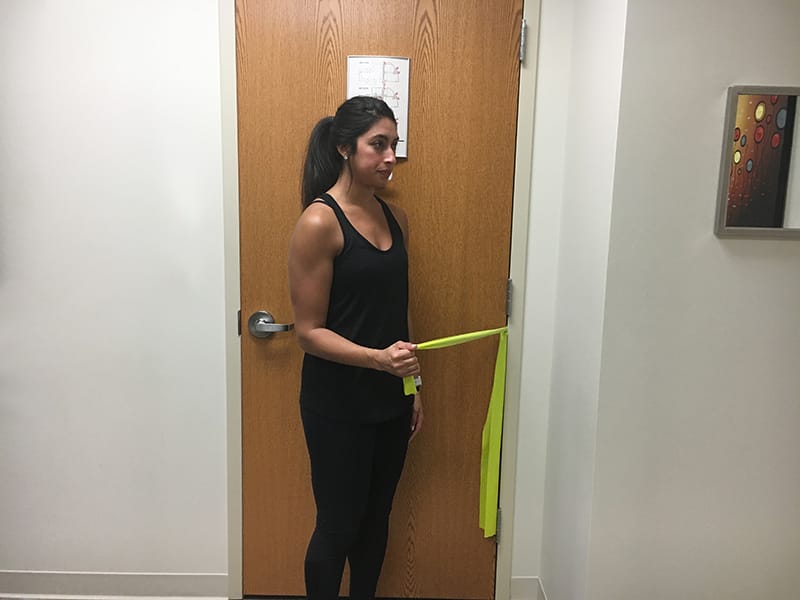
Scapular Row
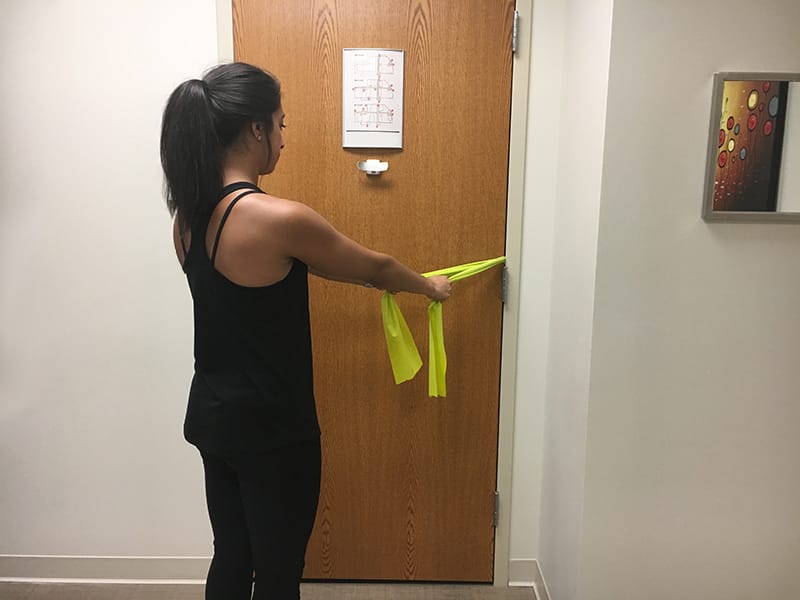
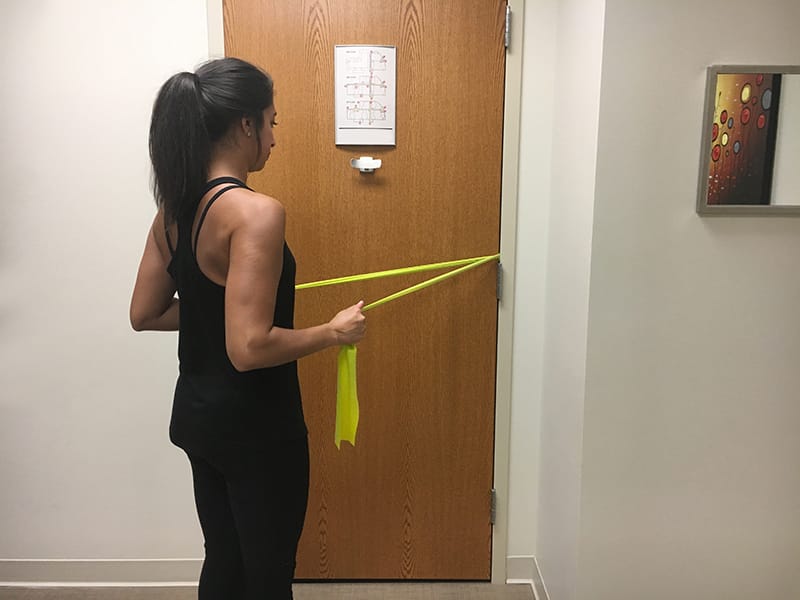
Shoulder Blade Squeezes
- Stand with your arms at your side.
- Pinch your shoulder blades together.
- Hold and squeeze for 5 seconds.
- Do 2 or 3 sets 10–15 reps daily.
If you have nagging shoulder pain or suffered an injury, consult with a physical therapist for further assessment. There are clinical diagnostic tests that can help determine if any further testing is needed. After an evaluation, your PT can work with you to formulate a plan to meet your individual goals with regard to your shoulder and get you back to function!
